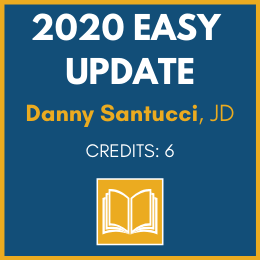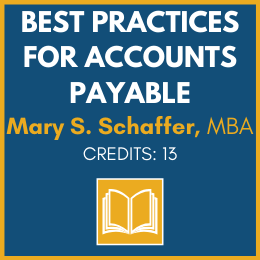
PPP Loan Forgiveness Application Released by the SBA
Forty-two days after the first Paycheck Protection Program (PPP) Loan Applications were accepted, the SBA released the PPP Loan Forgiveness Application. SBA Form 3508 includes 2 pages of instructions, Schedule A and its worksheet for computations, and 7 pages of application. That’s 11 pages and it’s just the start as SBA has yet to release FAQs or “interim final rules” to provide friendlier and more complete details for the forgiveness application.
According to the SBA, the form and instructions include several measures to “reduce compliance burdens and simplify the process for borrowers” including:
- Options for borrowers to calculate payroll costs using an “alternative payroll covered period” that aligns with borrowers’ regular payroll cycles
The forgiveness application allows the borrower to use the eight-week period following the receipt of the first loan proceeds (Covered Period) or to elect an “Alternative Payroll Covered Period.” The Alternative Payroll Covered Period begins on the first day of the borrower’s first pay period following the receipt of the first loan proceeds and ends eight weeks (56 days) thereafter. - Flexibility to include eligible non-payroll expenses paid or incurred during the eight-week period after receiving the PPP loan
The forgiveness application provides that an eligible non-payroll cost (interest, rent, utilities) must be paid during the Covered Period or incurred during the eight-week Covered Period and paid on or before the next regular billing date, even if the billing date is after the Covered Period. The calculations on lines 11, 12, and 13 will be used to determine whether the Borrower’s loan forgiveness amount must be reduced based on reductions in full-time equivalent employees. Specifically, the actual loan forgiveness amount that the Borrower will receive may be reduced if the Borrower’s average weekly FTE employees during the Covered Period (or the Alternative Payroll Covered Period) was less than during the Borrower’s chosen reference period. The Borrower is exempt from such a reduction if the FTE Reduction Safe Harbor applies. See PPP Schedule A Worksheet—FTE Reduction Safe Harbor. - Clarification of the 75% payroll expense rule
The Instructions in the forgiveness application clarify that the borrower can total payroll costs (wages, health insurance and retirement plan expenses). And, then limit the sum of other forgivable expenses (rent, mortgage interest and utilities) to 1/3 of payroll costs. For example, the business qualified for $100,000 PPP loan. It paid and incurred $65,000 in payroll costs in the eight-week covered period. To meet the 75% payroll rule, the business can only count $21,666 of other permitted costs (1/3 times $65,000) in the forgiveness calculation. Thus of the $100,000 PPP loan proceeds, only $86,666 of the loan is eligible for forgiveness. - Step-by-step instructions on how to perform the calculations required by the CARES Act to confirm eligibility for loan forgiveness
The PPP Schedule A Worksheet makes four computations: (1) report the eligible employee compensation for each employee, (2) limit the employee compensation to an annual maximum of $100,000, (3) report the number of full time equivalent employees (FTEs) for the Covered Period, and (4) determine if there was a reduction of FTEs during the Covered Period. Table 1 of Schedule A reports employees who did not earn in 2019 more than $100,000 annualized. Table 2 of Schedule A reports employees who earned in 2019 more than $100,000 annualized.
Note: The wage amount is capped at $15,385 (the eight-week equivalent of $100,000 per year) for each individual or the eight-week equivalent of their applicable compensation in 2019, whichever is lower.
The Schedule A worksheet is used to complete the Schedule A. If there is a reduction in FTEs or a reduction in wages for those employees earning less than $100,000 annualized, Schedule A is used to calculate the reduction in forgiveness. The Schedule A numbers are used for the application itself. - Borrower-friendly implementation of statutory exemptions from loan forgiveness reduction based on rehiring (or written evidence that the offer to rehire was declined) by June 30
The calculations on lines 11, 12, and 13 of Schedule A are used to determine whether the Borrower’s loan forgiveness amount must be reduced based on reductions in full-time equivalent employees. Specifically, the actual loan forgiveness amount that the Borrower will receive may be reduced if the Borrower’s average weekly FTE employees during the Covered Period (or the Alternative Payroll Covered Period) was less than during the Borrower’s chosen reference period. The Borrower is exempt from such a reduction if the FTE Reduction Safe Harbor applies. See PPP Schedule A Worksheet—FTE Reduction Safe Harbor.

Sharon Kreider, CPA, has helped more than 15,000 California tax preparers annually get ready for tax season. She also presents regularly for the AICPA, the California Society of Enrolled Agents, CCH Audio, and Western CPE. You’ll benefit from the detailed, hands-on tax knowledge Sharon will share with you—knowledge she gained through her extremely busy, high-income tax practice in Silicon Valley. With her dynamic presentation style, Sharon will demystify complex individual and business tax legislation. She’s a national lecturer for business and professional groups and consistently receives outstanding evaluations. In 2014, she was awarded the prestigious AICPA 2014 Sidney Kess Award for Excellence in Continuing Education.
DIG DEEPER:
How The $3.5 Trillion Budget Blueprint Could Impact Your Clients
The new reporting requirements on brokers are addressed in Section 80603 of the bill. “Broker,” by definition in Sec. 6045 (c)(1), is expanded to include “any other person who (for a consideration) regularly acts as a middleman with respect to property or services…A person shall not be treated as a broker with respect to activities consisting of managing a farm on behalf of another person.” In turn, the bill defines a “digital asset” as “any digital representation of value which is recorded on a cryptographically secured distributed ledger or any similar technology as specified by the Secretary.



